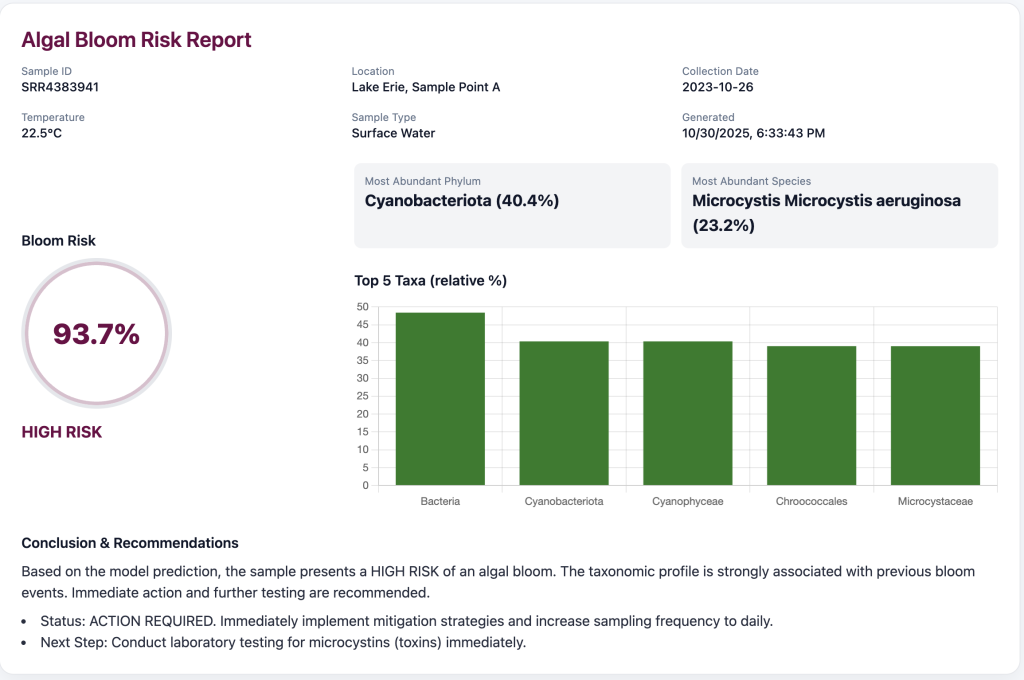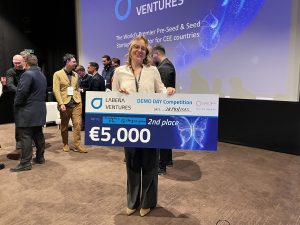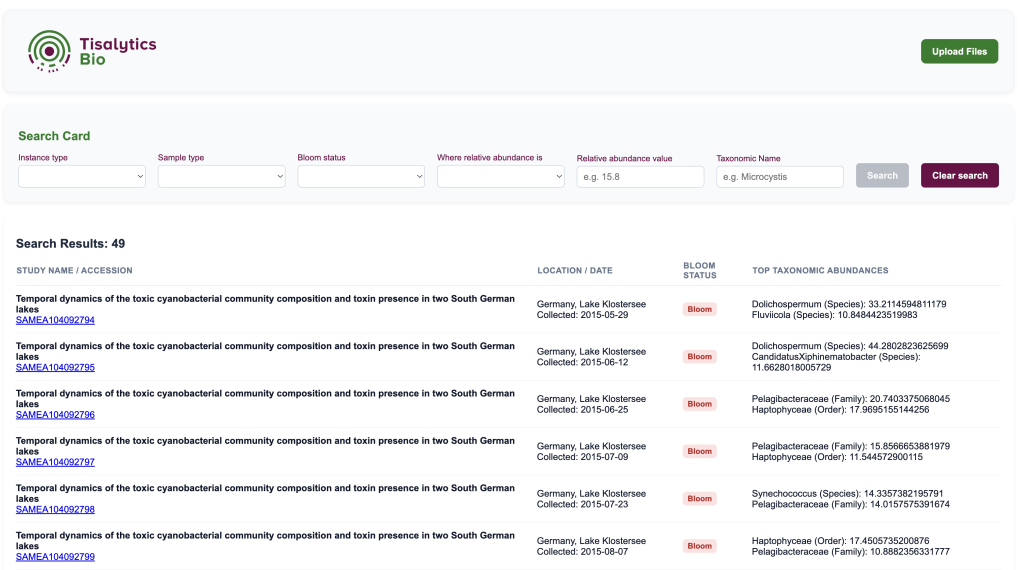It started with a simple conversation; a friend’s frustration over a struggling fishpond. The founders of Tisalytics Bio, both experienced bioinformaticians, were used to decoding genetic data, not rescuing ecosystems. But when they learned how unpredictable algae blooms could devastate fish stocks and livelihoods, they saw something familiar beneath the surface: data patterns.
That conversation turned into a mission. What if microbial communities (invisible to the naked eye but vital to every water ecosystem) could help predict ecological stress before it became visible? What if data could give nature a warning signal?
From that idea, Tisalytics Bio was born.
Turning data into an early warning system
Tisalytics Bio develops AI-powered software for early detection and prediction of harmful algal blooms (HABs) by analyzing microbial interactions in water. Using metagenomic sequencing, bioinformatics, and predictive modeling, the platform identifies changes in microbial communities that signal rising bloom risk — long before the water turns green.
Traditional monitoring methods react when it’s already too late. Tisalytics enables preventive action, giving aquaculture producers, environmental agencies, and researchers the insight to act early, protect ecosystems, and prevent economic loss.
Their system combines a cloud-based bioinformatics pipeline with a proprietary global HAB microbiome database, creating a powerful, scalable model for predictive ecology.

From idea to impact
In its first months, Tisalytics Bio moved quickly from concept to proof of feasibility. Within six months, the team deployed a working cloud-based MVP on AWS infrastructure and successfully reproduced microbial shifts linked to toxic algal events using public datasets.
These results demonstrated that microbial “early warning signals” are very important. The company has since begun pilot discussions with research institutions to validate its system in real-world aquaculture settings.
This progress earned the startup several major recognitions:
- €50,000 Innovation Fund Serbia grant for R&D
- 2nd Place at Labena Ventures Demo Day 2025
- Top 13 selection at the EIT Food Women in Agriculture (EWA) Program
- Presentation spot at the EIT Food Next Bio Conference in Warsaw

Building the world’s microbial intelligence layer
Tisalytics Bio stands out for its first-in-class integration of microbiome data, AI, and HAB-specific prediction. Its approach focuses on prevention rather than detection, helping stakeholders act before disasters unfold.
The team has also developed the first unified HAB microbial data schema, solving the challenge of fragmented global datasets and enabling cross-study comparison for model training.
Scalable and modular, the platform will be able to adapt to diverse water types — from fishponds and lakes to coastal regions — making it a flexible tool for both aquaculture and environmental protection.

The people behind the science
The founding team blends deep scientific expertise with technical agility:
- Jelisaveta Ilić, CEO – MSc in Engineering (UoB) and Bioscience Entrepreneurship (UCL), with years of experience leading bioinformatics projects and biotech consulting.
- Vesna Pajić, CSO – PhD in Computer Science, former university professor with over 20 years in bioinformatics and agri-environmental research.
- Aleksandar Strizeo, CTO – MSc in Electrical Engineering and Computer Science, senior software engineer with a decade of experience building scalable cloud systems.
Together, they translate complex microbial data into practical intelligence that helps protect ecosystems — and the communities that depend on them.

Looking ahead
Over the next 12–18 months, Tisalytics Bio will launch pilot projects in regions most affected by harmful algal blooms, expand its microbiome database with global data, and release Predictive Model v2 alongside a commercial API for enterprise clients.
In the long term, their goal is ambitious yet clear: to become the standard microbial intelligence layer for water ecosystems, driving sustainability, biodiversity, and climate resilience worldwide.
